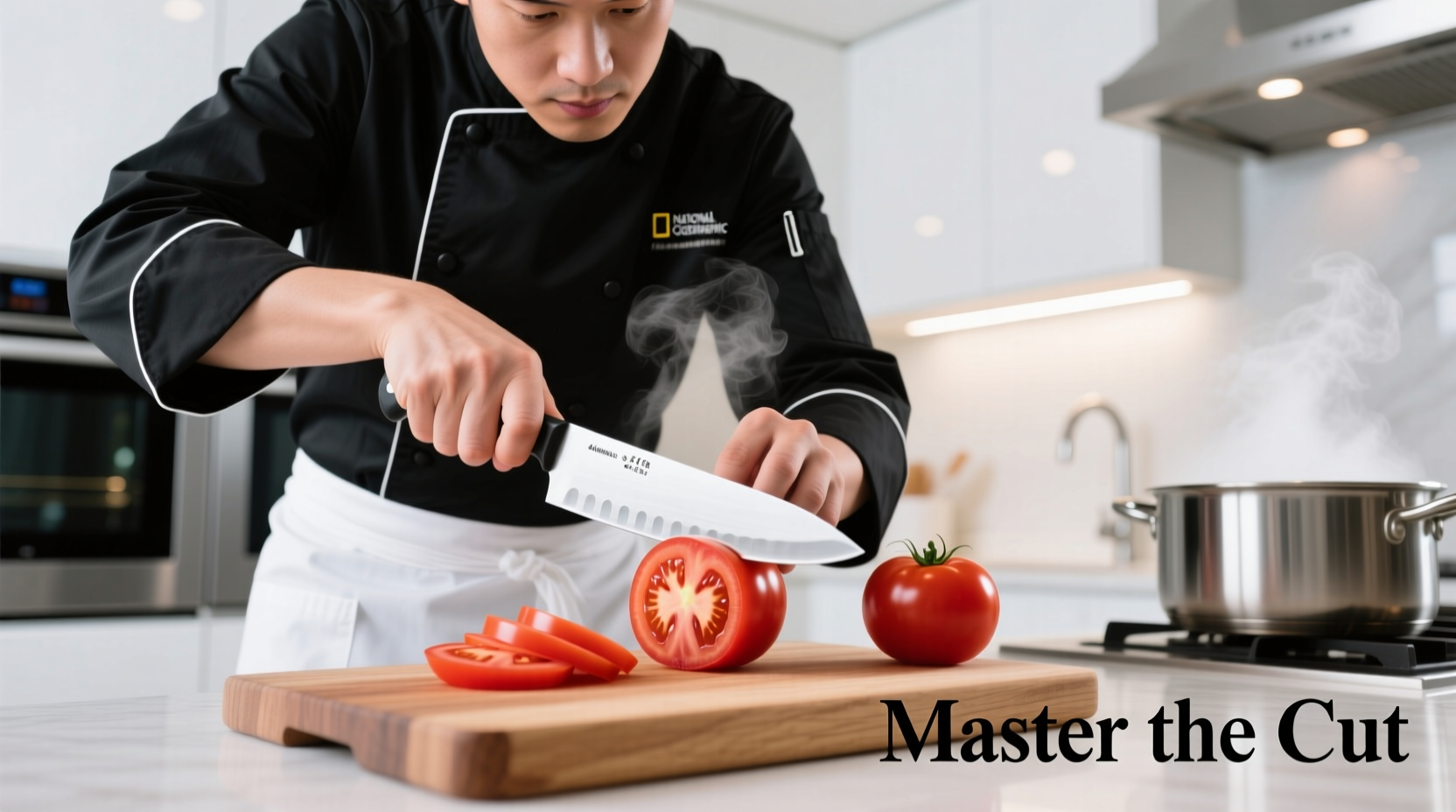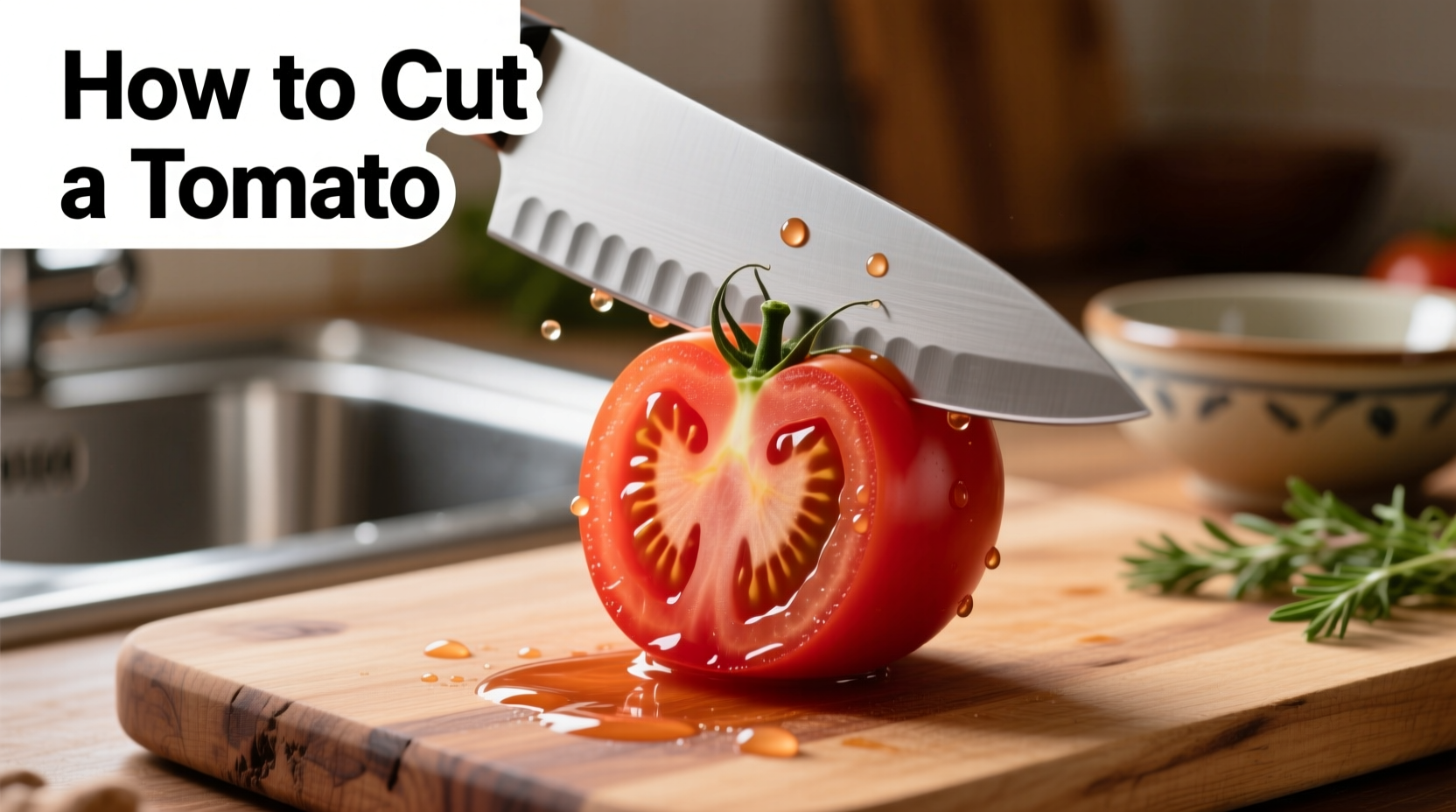Mastering the art of cutting tomatoes transforms your cooking experience. Whether you're preparing a fresh Caprese salad, dicing for salsa, or slicing for sandwiches, proper technique ensures clean cuts without squishing the delicate flesh. This guide reveals professional methods that home cooks can implement immediately for perfect tomato preparation every time.
Safety First: Essential Preparations Before Cutting
Before handling any knife, ensure your workspace is properly prepared. According to the FDA Food Code guidelines, proper food handling begins with clean surfaces and appropriate tools. Always use a stable cutting board—wood or soft plastic works best for tomatoes as they provide slight give, reducing the chance of slipping.
Choose the right knife for the job. While a chef's knife works for firmer tomatoes, a serrated knife (often called a tomato knife) with a 5-7 inch blade creates cleaner cuts through the tough skin without crushing the interior. Keep your fingers curled away from the blade using the "claw grip" technique professional chefs rely on for safety.

Step-by-Step: Basic Tomato Cutting Technique
Follow these steps for perfect tomato slices every time:
- Wash and dry the tomato thoroughly but gently—wet produce slips more easily
- Remove the stem by making a shallow V-shaped cut around the scar
- Position correctly with the stem scar facing up for stability
- Apply gentle pressure using a sawing motion with a serrated knife
- Guide the knife with your non-cutting hand using the claw grip
- Work from stem to blossom end for even slices
Specialized Cutting Methods for Different Culinary Applications
Professional kitchens use specific techniques depending on the recipe requirements. Understanding these variations elevates your cooking from basic to exceptional.
| Cutting Technique | Best Tomato Type | Recommended Use | Key Execution Tip |
|---|---|---|---|
| Slicing (1/4 inch) | Vine-ripened, medium firmness | Burgers, sandwiches, Caprese salad | Rotate tomato 90 degrees between slices for cleaner cuts |
| Dicing (1/2 inch cubes) | Firm Roma or plum tomatoes | Salsas, pico de gallo, sauces | Cut lengthwise first, then make horizontal cuts before dicing |
| Wedges | Beefsteak or large varieties | Salads, roasting, grilling | Cut from stem to blossom end through the core for even wedges |
| Concassé (peeled, seeded) | Any variety for sauces | Pasta sauces, soups, stews | Blanch first, remove skin and seeds before dicing |
Handling Different Tomato Ripeness Levels
Tomato texture varies significantly based on ripeness, requiring technique adjustments. According to research from the New Jersey Agricultural Experiment Station, which oversees one of America's largest tomato-producing regions, understanding ripeness is crucial for proper handling.
Firm tomatoes (just ripe): Can be cut with a straight chef's knife. Hold the tomato firmly but gently and use downward pressure without sawing.
Medium ripe tomatoes: Require the serrated knife technique with gentle sawing motion. These are ideal for most applications as they hold their shape while providing good flavor.
Very ripe tomatoes: Need special handling—consider using a serrated grapefruit spoon to scoop out sections rather than traditional cutting to prevent complete collapse.
Pro Tips for Perfect Tomato Preparation
Professional chefs employ these techniques to maximize tomato integrity:
- Chill tomatoes slightly before cutting—this firms up the flesh without affecting flavor
- Never cut tomatoes on glass or marble surfaces—they're too hard and damage both the knife and tomato structure
- Use a damp cloth under your cutting board to prevent slipping
- Cut tomatoes just before use—they deteriorate quickly once cut due to enzymatic browning
- Season cut tomatoes with salt 10-15 minutes before serving to enhance flavor and draw out excess moisture
Storing Cut Tomatoes Properly
Improper storage ruins carefully prepared tomatoes. The USDA Food Safety and Inspection Service recommends storing cut tomatoes in airtight containers in the refrigerator for no more than 2 days. Place cut-side down on a paper towel to absorb excess moisture that would otherwise make them soggy.
Never store cut tomatoes at room temperature for extended periods, as this accelerates spoilage and increases food safety risks. For best flavor, remove from refrigerator 30 minutes before serving to allow tomatoes to reach near room temperature.
Troubleshooting Common Tomato Cutting Problems
Problem: Tomato squishes when cutting
Solution: Use a sharper serrated knife and apply less downward pressure. Let overly ripe tomatoes drain in a colander for 10 minutes before cutting.
Problem: Inconsistent slice thickness
Solution: Create guide pieces by cutting thin slices from the tomato's sides first, then use these as visual guides for uniform thickness.
Problem: Seeds and juice scatter everywhere
Solution: Cut over a bowl to catch juices, or use the concassé method to remove seeds before dicing.











 浙公网安备
33010002000092号
浙公网安备
33010002000092号 浙B2-20120091-4
浙B2-20120091-4